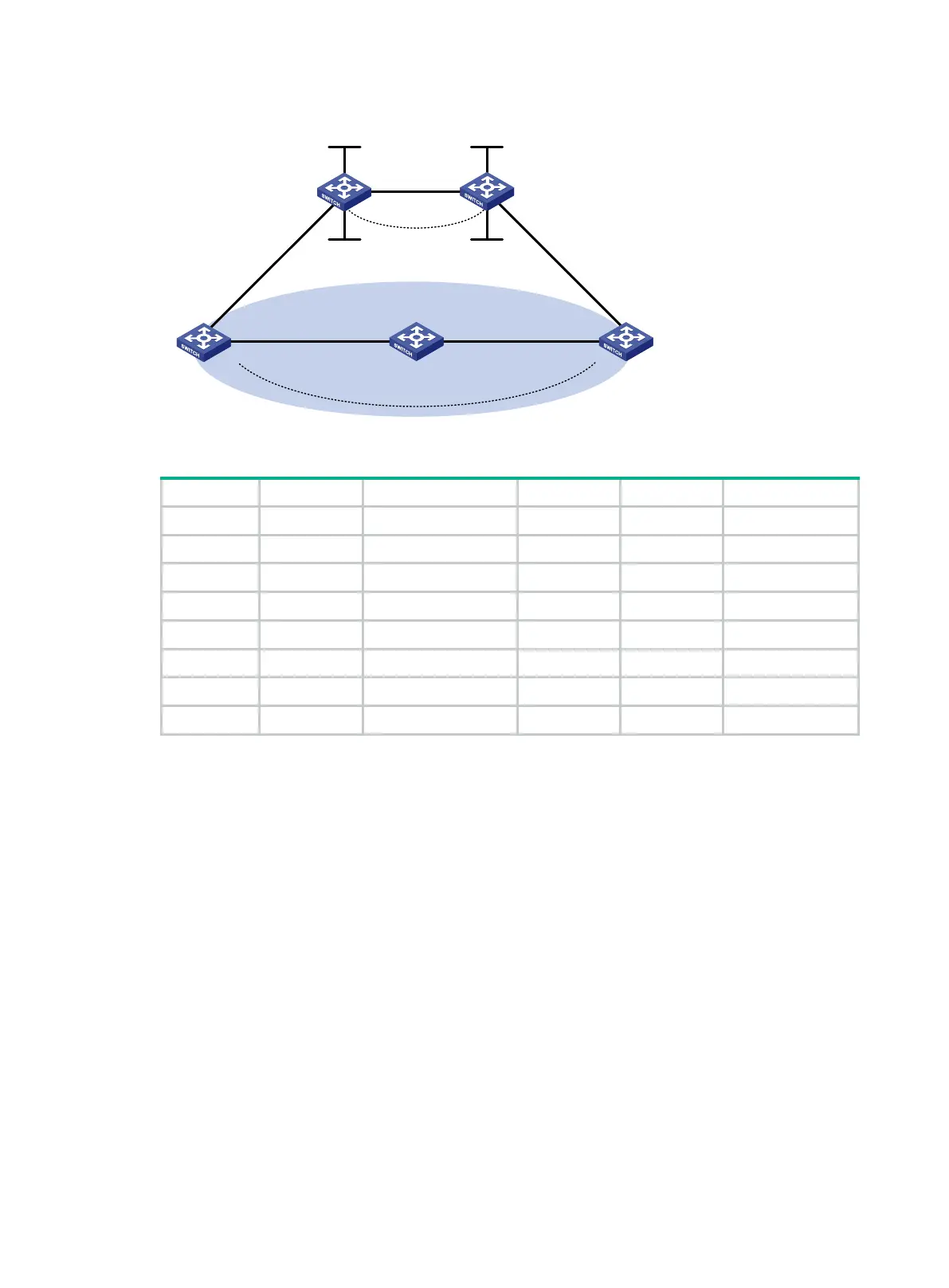305
Figure 81 Network diagram
Table 28 Interface and IP address assignment
CE 1 Vlan-int11 100::1/64 CE 2 Vlan-int11 120::1/64
Vlan-int13 20::1/64 Vlan-int12 30::2/64
PE 1 Loop0 1.1.1.9/32 PE 2 Loop0 2.2.2.9/32
Loop1 3::3/128 Loop1 5::5/128
Vlan-int11 100::2/64 Vlan-int11 120::2/64
Vlan-int12 10.1.1.1/24 Vlan-int12 10.1.1.2/24
Switch A Vlan-int11 30::1/64
Vlan-int12 20::2/64
Configuration procedure
1. Configure OSPFv3 on the customer networks.
Configure conventional OSPFv3 on CE 1, Switch A, and CE 2 to advertise subnet addresses of
the interfaces as shown in Figure 81. Set the cost value to 2 for both the link between CE 1 and
Switch A, and the link between CE 2 and Switch A. Execute the display ipv6 routing-table
command to verify that CE 1 and CE 2 have each learned the OSPFv3 route to VLAN-interface
11 of the other. (Details not shown.)
2. Configure IPv6 MPLS L3VPN on the backbone:
# Configure basic MPLS and MPLS LDP on PE 1 to establish LDP LSPs.
<PE1> system-view
[PE1] interface loopback 0
[PE1-LoopBack0] ip address 1.1.1.9 32
[PE1-LoopBack0] quit
[PE1] mpls lsr-id 1.1.1.9
[PE1] mpls ldp
[PE1-ldp] quit
[PE1] interface vlan-interface 12
[PE1-Vlan-interface12] ip address 10.1.1.1 24
[PE1-Vlan-interface12] mpls enable
Vlan
-int
12
Loop0
Loop
0
Sham-link
CE
1 Switch A
CE 2
PE
2PE
1
Loop
1
Loop1
OSPFv3 Area 1
Backdoor link
Vlan
-int
12
Vlan
-
int11
Vlan
-
int
11
Vlan-
int
13
Vlan-int11
Vlan-
int
11
Vlan-int12 Vlan-int12
Vlan
-int
13

